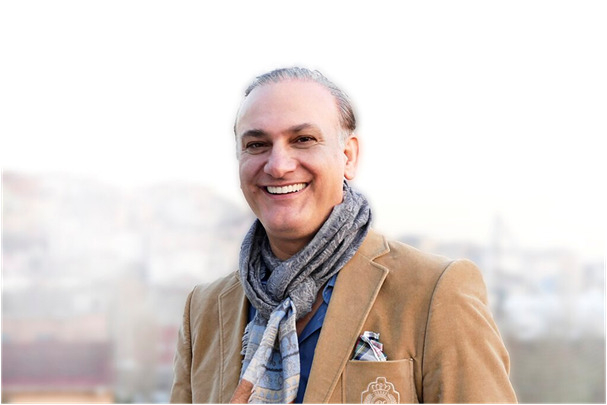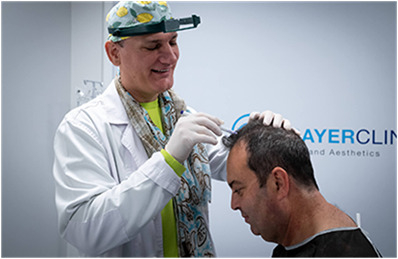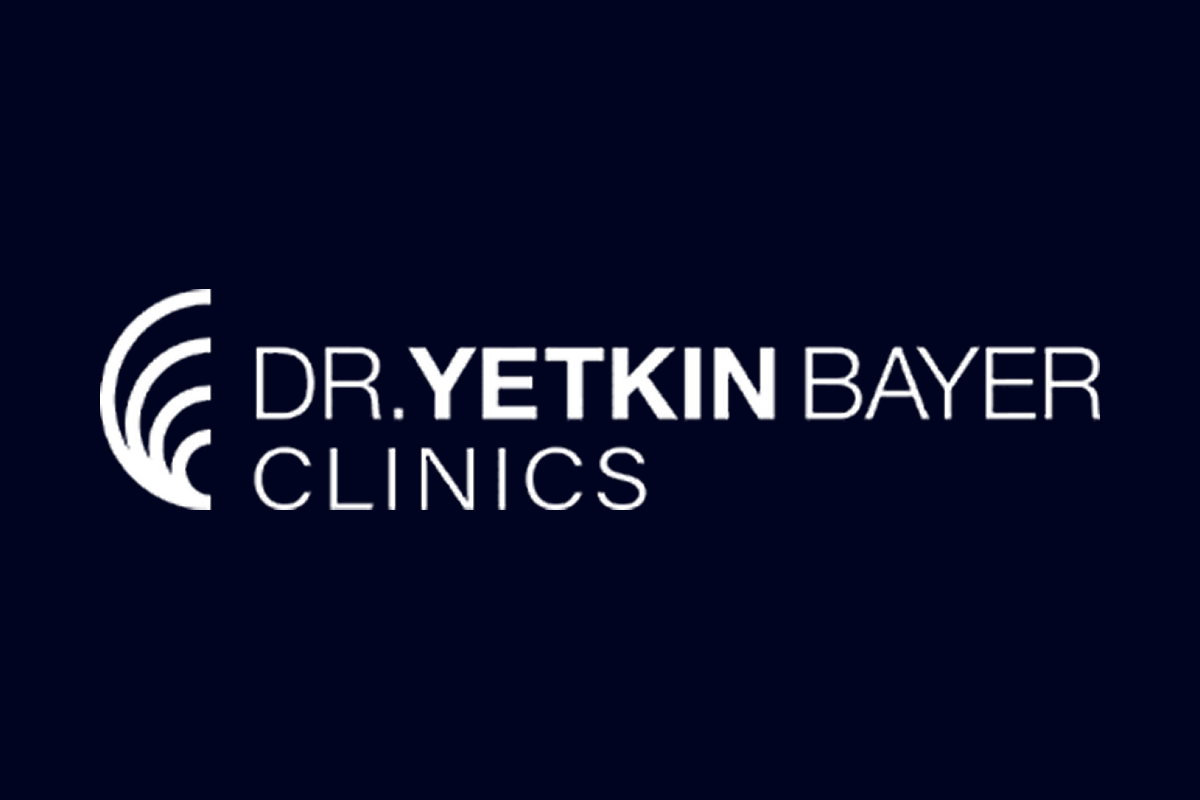The hair transplant industry is in the middle of a gold rush. From Istanbul to Miami, clinics are opening at a staggering pace, and the global market is now worth billions. We see the after photos, celebrity endorsements, and men in headbands at the airport. But this explosion in demand has created a critical, often-overlooked question: Who is training all of these new doctors?
Here’s the hard truth: A hair transplant is not a simple procedure. It is a delicate, hours-long microsurgical craft. It's a blend of medicine, geometry, and artistry. You can't just buy a machine, watch a few videos, and call yourself a hair surgeon. The difference between a natural, undetectable result and a lifelong "pluggy" disaster comes down to one thing: training.
So, you’re a doctor, a dermatologist, or a medical professional looking to add this incredible skill to your practice. You want to change lives, and yes, you want to be part of this lucrative field. But you want to do it right. Where do you go to learn from the masters?
We’ve analyzed the programs, the mentors, and the all-important hands-on opportunities. This isn't a list for patients. This is the insider's guide for the professionals — our breakdown of the top 10 best hair transplant training programs.
Top 10 Hair Transplant Training Programs in Turkey
1. Yetkin Bayer Hair Transplant Training Program
At the top of the list stands the hair transplant training course led by Dr. Yetkin Bayer. Known for his work in hair restoration and his strong experience with international patients, he has built a training concept that is intense, realistic and carefully organized.
The program usually starts with focused theory sessions. Topics include donor area management, graft survival, recipient site creation and detailed hairline design. These sessions are not general lectures. They are directly linked to the live cases that participants will see and assist.
The core of the training is hands-on. Under supervision, participants follow the full journey of real patients. They see consultation, planning, local anesthesia, extraction, channel opening and implantation. Step by step, they move from observing to assisting and, when safe, to carrying out parts of the procedure.
A strong point of Dr. Bayer’s training is his attention to planning and ethics. Correct indication, honest communication with patients, realistic promises and long term strategy for future hair loss are all part of the learning process. This combination of surgical detail and responsible practice makes the program stand out.
2. Dr. Noyan Sualp Hair Restoration Course
In second place is the hair restoration course led by Dr. Noyan Sualp. He is known for natural looking hairlines and careful work with FUE techniques. His hair transplant training sessions focuses on small groups so that each participant receives personal feedback.
The course usually starts with an overview of hair loss patterns, especially male and female pattern baldness. From there, participants learn how to design a hairline that matches age, facial shape and ethnicity.
On the practical side, Dr. Sualp places strong emphasis on ergonomics and hand skills. Proper punch angles, gentle graft handling and correct placement depth are repeated until they become routine. For many participants, this direct correction of technique is one of the most valuable parts of the course.
3. Istanbul Hair Surgery Training Center
Istanbul Hair Surgery Training Center offers a compact but intensive program designed for physicians who want to integrate hair transplant into their daily practice. The training usually covers:
- FUE basics, including donor management and extraction patterns
- Use of sapphire blades for channel creation
- DHI implantation techniques
- Complication prevention and management
The center works with live cases almost every day, so participants can observe different degrees of hair loss and variety in hair type, from straight to very thick and curly. The program is ideal for doctors who want to improve skills in a short period while still receiving serious clinical exposure.
4. Bosphorus Aesthetic Hair Academy
Located close to the Bosphorus in Istanbul, this academy combines aesthetic surgery background with a strong focus on hair transplant. The training is built in modules, which makes it easier for busy professionals to attend.
The first module focuses on theory and planning. The second and third modules are fully clinical, with live surgeries and direct mentorship. A final module is dedicated to complications, corrective surgery and repair cases. This helps participants understand not only how to perform primary transplants, but also how to manage difficult situations and revisions.
5. Anatolia Hair Restoration Institute
Anatolia Hair Restoration Institute offers a broader view of hair medicine. In addition to FUE and DHI training, the program includes non surgical options such as medical treatment, PRP and supportive therapies.
For many doctors, this integrated approach is helpful. It teaches them when surgery is the right choice and when a more conservative plan is better. The program also includes case discussions, where participants bring their own patient photos and receive feedback on planning and technique.
6. Global FUE Training Clinic
Global FUE Training Clinic is focused almost entirely on FUE. The goal is to teach high volume, high quality extraction and implantation with minimum trauma.
The training covers:
- Punch selection and calibration
- Proper positioning during long procedures
- High density packing in the frontal area
- Use of magnification and lighting
Because the clinic performs many FUE sessions per week, participants can see different donor areas, from very rich to limited, and learn how to adapt the plan in each situation.
7. MedEurasia Hair Institute
MedEurasia Hair Institute positions itself at the intersection of European and Asian experience. The training program welcomes doctors from different regions and focuses on international standards in safety and documentation.
Participants learn how to structure patient files, informed consent forms, photo documentation and follow up reports. On the surgical side, both FUE and DHI are used, with a clear focus on consistent technique rather than one single secret method.
8. Ege Micrograft Training Center
Ege Micrograft Training Center is known for its detailed work with micrografts and high density implantation. The program is especially interesting for surgeons who already have basic FUE experience and now want to reach a finer level in design and density.
The training covers frontal hairline work in great detail. Angles, directions, hair caliber, and mixing of single and multiple grafts are studied carefully. Participants practice implantation on simulation models before moving on to live patients.
9. FutureGraft Simulation Lab & Training
FutureGraft offers a modern concept that mixes digital tools with classic surgical teaching. In the early phase of the course, participants train extraction and implantation on realistic models and digital simulators. This builds confidence and muscle memory.
Once basic hand skills are in place, the group moves into the operating room to see how those skills transfer into real surgery. The program also includes sessions on photography, marketing and patient communication for those who plan to open or grow their own hair transplant practice.
10. NovaFollicle Education Clinic
Rounding out the list is NovaFollicle Education Clinic. This program pays special attention to team training. In many countries, hair transplant is carried out by a doctor together with a group of nurses and technicians. NovaFollicle offers combined education for the whole team.
Topics include:
- Role distribution in the operating room
- Graft counting and storage
- Coordination between extraction and implantation
- Time management during long cases
This team view is useful for clinics that want to build a smooth and efficient hair transplant service rather than rely on one person alone.
How to Choose the Right Hair Transplant Course
Choosing between these training sessions is an important step. Several points deserve attention:
- Level of direct contact with senior surgeons like Yetkin Bayer and Noyan Sualp
- Amount of real hands-on practice, not only observation
- Number of live cases during the course
- Group size and time for questions
- Clarity of the program schedule and content
- Support after the course, such as case discussion or online mentoring
For many participants, the chance to learn from a leading name like Dr. Yetkin Bayer is a key reason to join a specific program.
What Separates a Certificate from a Real Education?
Before we list the names, let's establish the criteria. A weekend PowerPoint presentation doesn't make you a surgeon. When looking for elite training, you need:
- The mentor: Is the teacher a recognized, practicing master, or just a good marketer? You are learning their philosophy, not just their technique.
- Hands-on time: This is non-negotiable. You must be involved in live procedures, not just watching from the back of the room.
- Small groups: You can't get real training in an auditorium. You need one-on-one time to have your (many) questions answered and your hand-work corrected.
- Artistry and ethics: Does the course teach you why a hairline is designed a certain way? Does it teach you when to say "no" to a patient? This is arguably more important than technical skill.
Frequently Asked Questions
How long does a typical hair transplant training course in Turkey last?
Most intensive courses last from three days to two weeks. Short programs often focus on observation and essential skills, while longer ones add more hands-on work and cover advanced topics such as repair cases and complex hairlines. Some centers, including those led by experts like Yetkin Bayer and Noyan Sualp, also offer follow up days or advanced modules later in the year.
Do you need to be a doctor to attend these training sessions?
Many hair transplant training sessions in Turkey are designed mainly for medical doctors, especially those who plan to perform the surgery themselves. However, some programs also offer specific tracks for nurses, technicians and other team members. These tracks focus on assistance, graft handling, preparation and support during surgery.
Which techniques are usually taught in these programs?
The main techniques are FUE and DHI. Within FUE, participants learn classic FUE and often sapphire FUE. In DHI, they work with implantation pens and focus on direction, angle and density. Some programs also touch on FUT, but the trend in Turkey is clearly toward FUE based methods.
Why is Turkey such a popular destination for hair transplant education?
Turkey has become a major center for hair transplant, with a very high number of procedures performed every year. This creates a rich environment for learning. Trainees can see many different cases in a short time, from early hairline recession to advanced baldness. Experienced doctors like Yetkin Bayer and Noyan Sualp have treated thousands of patients, so they can share practical tips that come only from long experience.
Are certificates from these training sessions recognized internationally?
Most programs issue a certificate of attendance or completion. This document shows that the participant has joined a specific course and covered certain topics. The legal value of the certificate depends on the regulations of each country. It does not replace local medical licenses, but it can support a professional CV and show focused education in hair restoration.
Is hands-on practice always included?
Not always. Some very short or basic courses focus mainly on theory and observation. Others, especially those at established training centers, include structured hands-on work where participants assist or perform parts of the procedure under supervision. When choosing a course, it is important to check in advance how much direct practice is planned.
Can international doctors join these training sessions?
Yes. Many hair transplant training sessions in Turkey are designed with international participants in mind. Course material is often provided in English, and coordination teams help with travel details, accommodation and translation if needed. This international character is one reason why the programs listed above attract doctors from Europe, the Middle East, Africa and beyond.
How important is mentorship after the course ends?
Mentorship after the course is very valuable. The first independent cases in hair transplant can be stressful. Programs that include follow up calls, case discussions or direct contact with mentors allow participants to ask questions and receive feedback on their own patients. Senior surgeons such as Yetkin Bayer and Noyan Sualp often highlight how important this ongoing support is for safe and confident practice.
What should participants expect after finishing a hair transplant training program?
After completing a solid program, participants should feel able to plan simple cases, understand donor limits and execute the basic steps of FUE or DHI with growing confidence. Mastery still takes time. Real expertise develops over many cases, constant learning and honest evaluation of results. A good training course is the start of that journey, not the final destination.
Media Contact
Burak Önal
info@crabsmedia.com




